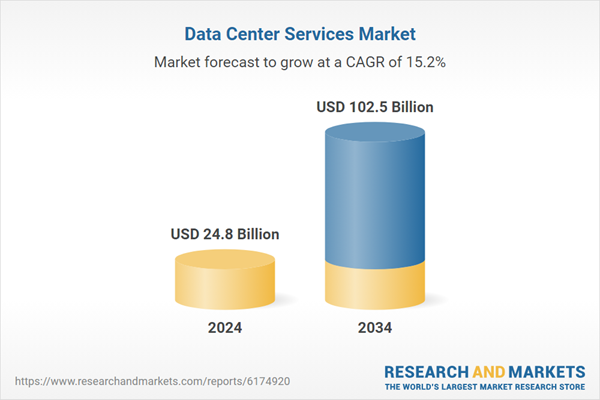The growth is driven by the increasing demand for cloud computing and data storage solutions. As companies in diverse sectors increasingly shift to cloud-based platforms to gain scalability, agility, and cost savings, the demand for dependable, high-performing data centers continues to rise. These facilities form the foundation for cloud service providers, allowing them to deliver scalable and resilient digital solutions to their customers. In response to stricter regulatory frameworks and heightened awareness around cyber threats and data breaches, organizations are prioritizing data centers that incorporate robust security protocols, built-in redundancy, and full compliance with industry standards. Additionally, the growing focus on business continuity, disaster recovery, and operational resilience is accelerating the need for data center services that ensure maximum uptime, strong failover capabilities, and secure backup infrastructure.
The installation and integration services segment held a 38% share in 2024 and is projected to grow at a CAGR of 15% through 2034. This segment remains critical for deploying hyperscale infrastructures, colocation sites, and enterprise-grade IT frameworks. These services enable seamless deployment of servers, power systems, cooling mechanisms, and networking equipment while ensuring compatibility with existing systems. Their growing prominence is attributed to the rising adoption of hybrid cloud environments, AI-driven computing, and high-density workloads, which demand precise configuration and advanced integration techniques.
In 2024, the large data centers segment held a 45% share and is anticipated to grow at a CAGR of 15.3% between 2025 and 2034. These facilities act as the cornerstone for hyperscale and colocation deployments, providing unparalleled capacity, next-gen cooling solutions, and high-level interconnectivity. Their infrastructure is designed to accommodate AI, enterprise workloads, and cloud-native applications with efficiency and flexibility. Rising demand for scalable, high-performance infrastructure that meets multi-tenant requirements is reinforcing the importance of large data centers in global digital transformation strategies.
United States Data Center Services Industry held an 85% share and generated USD 7.7 billion in 2024. This leadership is driven by the widespread presence of hyperscale cloud operators, robust digital infrastructure, and widespread adoption of hybrid IT systems across enterprises. Innovation in artificial intelligence, edge computing, and digital twin technologies is reshaping the way businesses operate, creating new use cases for advanced data centers. The expansion of 5G networks, accelerated migration to cloud platforms, and rising cybersecurity demands are all pushing organizations to invest in secure, scalable, and performance-optimized data center environments.
Major players operating in the data center services industry include Schneider Electric, Eaton, NTT Data, Digital Realty, IBM, Cisco Systems, Dell Inc., Equinix, Siemens, and ABB. Leading players in the data center services market are embracing sustainability, digital automation, and strategic global expansion to boost market presence. Companies are building energy-efficient and modular facilities to meet environmental regulations and reduce operating costs. Integration of AI-powered monitoring, remote management, and predictive maintenance is enhancing performance and uptime.
Comprehensive Market Analysis and Forecast
- Industry trends, key growth drivers, challenges, future opportunities, and regulatory landscape
- Competitive landscape with Porter’s Five Forces and PESTEL analysis
- Market size, segmentation, and regional forecasts
- In-depth company profiles, business strategies, financial insights, and SWOT analysis
This product will be delivered within 2-4 business days.
Table of Contents
Companies Mentioned
The key companies profiled in this Data Center Services market report include:- ABB
- Amazon Web Services
- Cisco Systems
- Dell
- DXC
- Equinix
- Eaton
- Fujitsu
- HCL
- Hewlett-Packard Enterprise (HPE)
- Hitachi
- Huawei Technologies
- IBM
- Microsoft
- NTT
- Schneider Electric
- Siemens
- Vertiv
- AirTrunk
- AtlasEdge
- CoreSite Realty
- Iron Mountain Data Centers
- Keppel Data Centre
- NEXTDC
- Switch
- Applied Digital
- CoreWeave
- Crusoe Energy Systems
- Vapor IO
Table Information
| Report Attribute | Details |
|---|---|
| No. of Pages | 230 |
| Published | September 2025 |
| Forecast Period | 2024 - 2034 |
| Estimated Market Value ( USD | $ 24.8 Billion |
| Forecasted Market Value ( USD | $ 102.5 Billion |
| Compound Annual Growth Rate | 15.2% |
| Regions Covered | Global |
| No. of Companies Mentioned | 31 |









